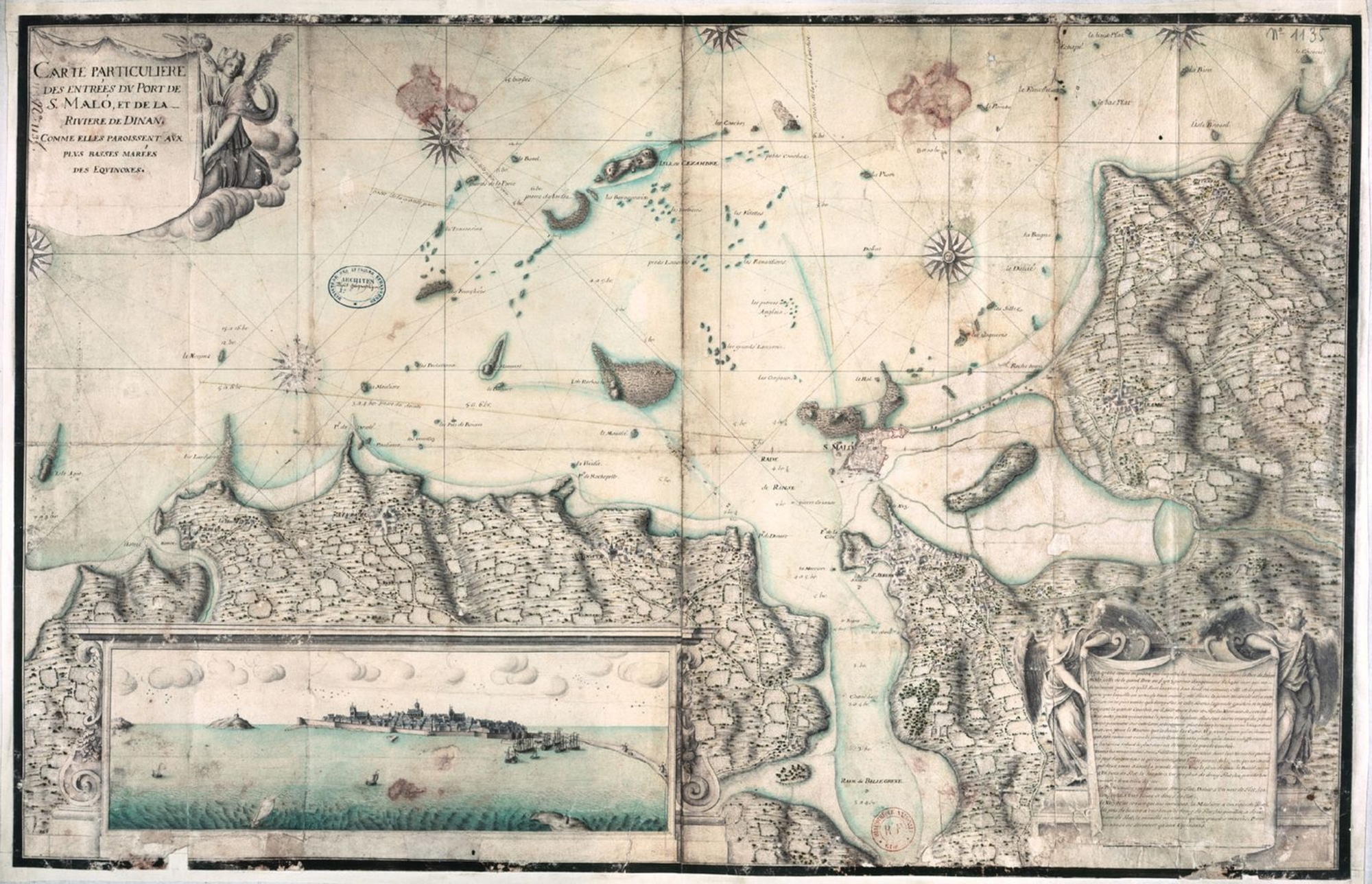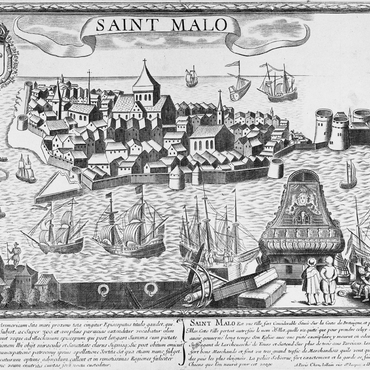
- Home
- Trade and navigation
- Trade circuits
- Textiles and sails
A market, ships, people and daring entrepreneurs: starting in the 17th century, Saint-Malo had everything it needed to take its rightful place amongst France's port cities. Located at the opening of a vast textile production area, Europe's largest at the time, the city quickly emerged as the leading port for exporting textiles of all sorts – rough hemp fabric, toiles de halle, canvas, sailcloth, duck, muslin, flax clothes, etc. In the 17th century, this textile trade, which was rapidly accompanied by the redistribution of finished products from every corner of Europe, intensified the flow of ships that entered and exited the port on a daily basis.


